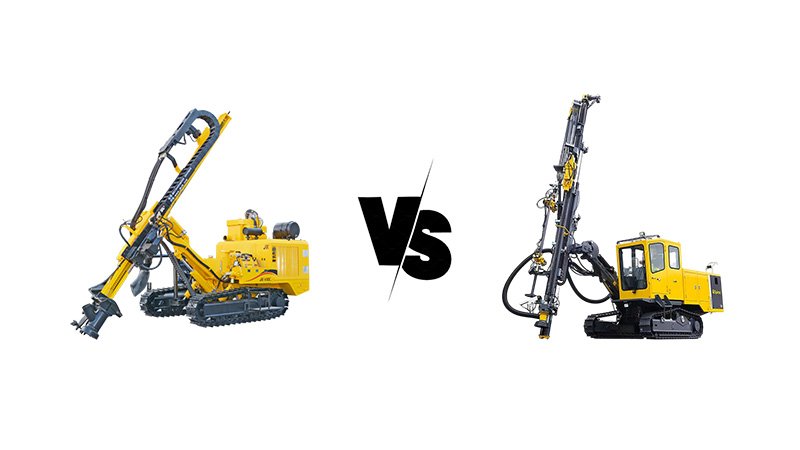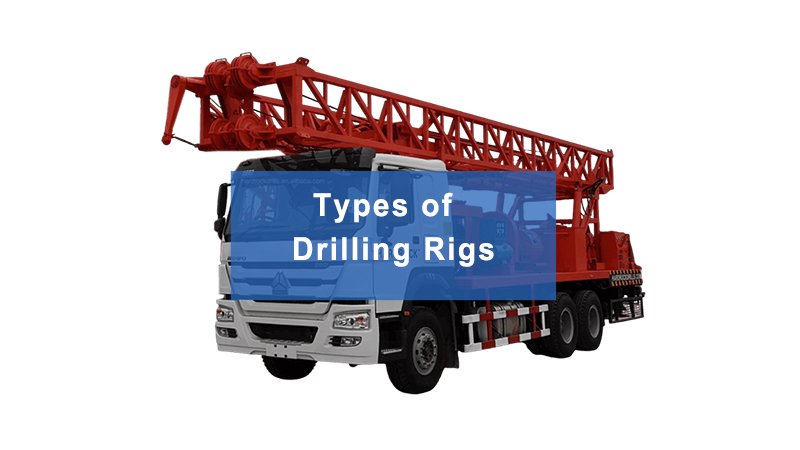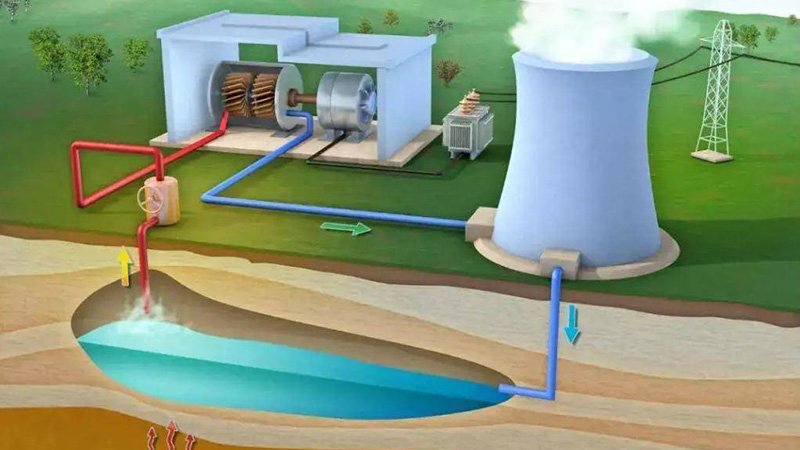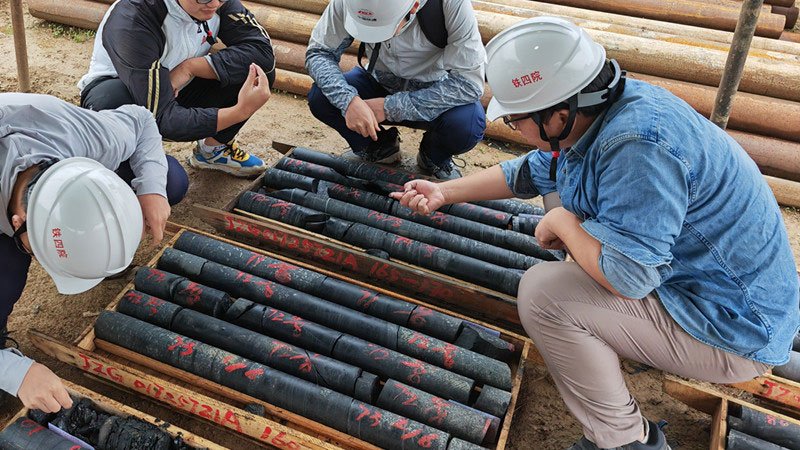Struggling to understand what a water well drilling rig is and what it does? The world of drilling equipment can be confusing. Knowing the basics can help you choose the right equipment.
A water well drilling rig is a machine that drills holes in the ground to find water. It includes a power source, a drilling system, and a way to lift and lower equipment.
I've spent years building drilling rigs at Hardrock. I've seen how important it is to pick a good rig. As more people need water, having a rig you can count on is key to success. Let's look closer at what these machines are all about.
What Are the Main Components of a Water Well Drilling Rig?
Do you feel lost when you look at a drilling rig? Knowing the main parts helps you understand how it works. This can save you money and time.
The main components of a water well drilling rig include the mast (tower), power unit (engine), rotary table, drill string, mud pump, and control systems.
At Hardrock, we build these rigs. I know every part well. The mast is like the backbone of the rig. It holds everything up and provides stability during drilling operations. The power unit or engine gives power to the rig - we typically use diesel engines because they're reliable in remote locations. The rotary table transfers rotational force to the drill string. The drill string consists of drill rods and a drill bit. The bit cuts into the ground. We use a mud pump or an air compressor to clean out the hole and remove cuttings. The hoisting system lifts and lowers the drill string during operations. The control systems allow operators to manage all these components safely and effectively.
Understanding these parts helps customers like Mohammed Al-Rahman from Dubai. When he visits our factory, he knows exactly what to look for in the equipment he's purchasing. Last year, he specifically requested enhanced control systems for his rigs operating in extreme desert conditions.
How Does a Water Well Drilling Rig Actually Work?
Ever wonder how a drilling rig drills so deep? It seems hard, but it's a simple process.
A water well drilling rig works by spinning a drill bit to cut into the ground. Mud or air is pumped down through the drill pipe to cool the bit and carry cuttings to the surface.

I've shown many people how drilling works. The engine powers the entire system. The rotary drive turns the drill string and bit. As the bit cuts into the ground, more drill rods are added as the hole gets deeper. This is called "making a connection." Drilling fluid (mud) or air is pumped down through the hollow drill rods. This serves three important functions: it cools the bit, carries the rock cuttings to the surface, and stabilizes the borehole walls to prevent collapse.
When the hole reaches the desired depth or water-bearing formation, the drill string is removed. A well casing (usually PVC or steel pipe) is inserted to keep the hole open. A screen section is added at the water-bearing level to let water in but keep sand out. Sometimes, we add gravel around the screen to further filter the water. Finally, the space between the casing and hole is sealed with cement or clay to prevent surface contamination. After development and testing, a pump is installed, and the well is ready to produce water.
The process sounds simple, but it requires skill and experience. I remember a project in East Africa where we had to drill through alternating layers of hard rock and loose sand. The driller had to constantly adjust drilling parameters to maintain progress without damaging the equipment or losing the hole.
What Are the Different Types of Water Well Drilling Rigs?
Are you confused by all the different drilling rigs? The wrong type of rig can cost you time and money.
The main types of water well drilling rigs include rotary drilling rigs (mud or air), cable tool rigs, DTH hammer rigs, and auger rigs. Each type is designed for specific ground conditions and drilling depths.
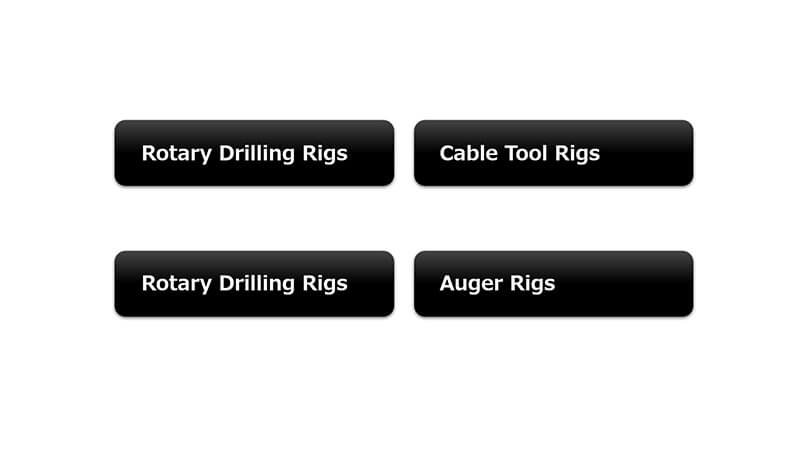
At Hardrock, we manufacture different types of rigs to meet various drilling needs.
Rotary drilling rigs are our most popular models. They use a rotating bit with mud or air circulation. Mud rotary systems work well in soft or unconsolidated formations like sand, clay, or gravel. They create a mud cake on the borehole wall for stability. Air rotary systems are faster in hard formations and provide cleaner water samples, but they can't stabilize unconsolidated formations as effectively.
Cable tool rigs (also called percussion rigs) use a heavy bit that repeatedly drops and crushes rock. They're slower than rotary rigs but are simple, reliable, and good for hard rock conditions. They're still used in remote areas where simplicity is valued.
Down-the-hole (DTH) hammer rigs combine rotary motion with percussive impact. A pneumatic hammer directly behind the bit delivers powerful blows while rotating. These rigs excel in hard rock formations and can achieve faster penetration rates than conventional rotary methods.
Auger rigs use a large spiral bit to remove soil as it turns. They're limited to shallow depths (usually under 30 meters) and unconsolidated materials, but they're simple and economical for certain applications.
We also produce combination rigs that can switch between different drilling methods. These versatile machines cost more initially but provide flexibility when drilling through varying formations.
Mohammed's company in Dubai operates in diverse geological conditions, from coastal sands to rocky inland areas. He typically purchases our combination rigs with both mud and air capability to handle this variety. For his specialized deep drilling projects, he prefers our heavy-duty DTH hammer rigs.
How Much Does a Water Well Drilling Rig Cost?
Are you worried about the cost of a drilling rig? The price can be high. Knowing what affects the price helps you plan.
A new water well drilling rig can cost from $50,000 for a basic portable rig to over $1 million for a large, advanced model. Used rigs typically cost 40-60% of new ones, depending on condition and age.

Price is always a big question for my customers. At Hardrock, our rig prices depend on several factors.
The drilling depth capacity is perhaps the most significant factor. A rig that can drill 100 meters costs much less than one that can reach 1,000 meters.
The drilling diameter capability also affects price - larger diameter wells require more powerful and expensive equipment.
The drilling method impacts cost significantly. Simple auger rigs are the least expensive. Mud rotary systems cost more due to their fluid handling components. DTH hammer rigs require air compressors, which add substantial cost.
Power and automation features also affect pricing. Higher horsepower engines, hydraulic systems, and automated rod handling systems increase costs but improve efficiency and safety.
Mounting options matter too - trailer-mounted rigs are less expensive than truck-mounted ones, while track-mounted rigs for rough terrain access command premium prices.
Beyond the initial purchase price, you should consider operating costs (fuel, maintenance, parts) and transportation costs between sites. Our customers in developing regions often prioritize fuel efficiency and parts availability over advanced features.
Mohammed's company typically invests in mid-range rigs with good depth capacity and reliability. He told me once, "I'd rather pay more upfront for a rig that won't break down in the middle of nowhere." He understands that downtime costs more than premium equipment in the long run.
What Safety Features Should a Water Well Drilling Rig Have?
Are you concerned about safety on a drilling site? A rig without proper safety features can lead to serious accidents and injuries.
Essential safety features for water well drilling rigs include emergency shutdown systems, moving part guards, proper lighting, noise reduction, anti-fall protection, pressure relief systems, and lockout/tagout capabilities.

Safety is never optional at Hardrock. I've unfortunately witnessed the aftermath of drilling accidents, and they can be devastating. Every rig we build includes multiple emergency stop buttons in strategic locations that can immediately shut down all operations. These are designed to be easily accessible to operators and helpers.
Guards and shields over moving parts like belts, chains, and the rotary table are critical. We design these to prevent accidental contact while still allowing necessary access for maintenance. Proper lighting for night operations is standard on our rigs, with focused work lights for the drill floor and general area lighting for the surrounding workspace.
We equip our rigs with pressure relief valves in the hydraulic and mud systems to prevent dangerous over-pressurization. Anti-fall protection systems include railings, non-slip surfaces, and harness attachment points for working at heights on the mast.
Modern rigs should have noise reduction measures to protect workers' hearing, including engine enclosures and mufflers. Lockout/tagout capabilities allow for safe maintenance by ensuring equipment can't be accidentally energized.
Beyond physical features, we emphasize the importance of operator training and providing comprehensive operation manuals. Our rigs come with safety stickers in appropriate languages and clearly marked control functions.
When Mohammed's team visits for training, we spend nearly a full day on safety procedures alone. He's particularly concerned about mast stability in windy conditions, so we've added additional outriggers and stability monitoring systems to his rigs.
How to Choose the Right Water Well Drilling Rig for Your Project?
Are you unsure how to pick the best rig for your needs? The wrong choice can lead to project delays, excessive costs, and frustration.
Choose a water well drilling rig based on your target depth, formation types, required well diameter, site accessibility, climate conditions, operator skill level, and long-term support availability.

I help customers select the right rig every day. Here's the process I recommend:
- Determine your drilling requirements: First, be clear about how deep you need to drill, what diameter the completed well needs to be, and what types of geological formations you'll encounter. This information forms the foundation of your decision.
- Assess your drilling sites: Consider accessibility (will you need a highly mobile rig?), space limitations, and environmental conditions like temperature extremes or high winds. For example, track-mounted rigs work better in remote, rough terrain, while truck-mounted rigs are ideal for contractors who travel long distances between jobs.
- Evaluate your operational capacity: Consider your team's experience level, available support infrastructure, and maintenance capabilities. Some advanced rigs require specialized knowledge to operate effectively and safely.
- Calculate your complete budget: Look beyond the initial purchase price to include operating costs, transportation between sites, maintenance expenses, and expected productivity (how many wells per year).
- Consider parts and service availability: Even the best rig will eventually need parts and service. Is the manufacturer able to provide support in your region? Do they maintain adequate parts inventory?
- Examine the manufacturer's reputation: Research their history, talk to current customers, and if possible, visit operations using their equipment.
Mohammed's company has evolved its rig selection over time. He started with basic rigs but now invests in more specialized equipment as his projects have become more complex. He particularly values our 24/7 technical support and parts availability, telling me once, "When my rig is down, I'm losing thousands of dollars a day. I need a partner who understands that urgency."
Conclusion
A water well drilling rig is a specialized machine for accessing groundwater. Understanding the components, operation, types, costs, safety features, and selection criteria helps you choose the right equipment for successful water well projects.



